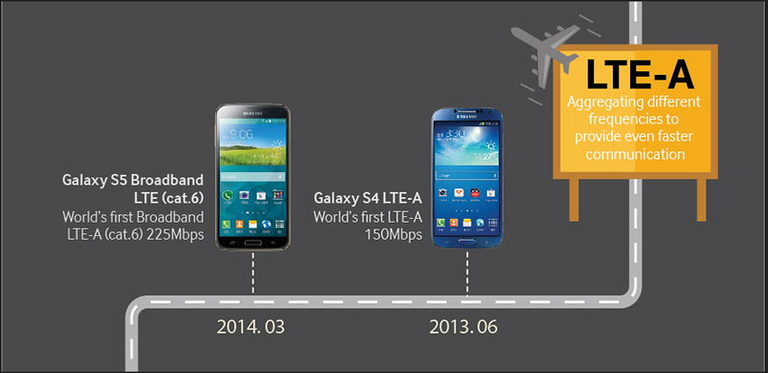Evolution of the Gs: The journey from 1G to 5G
In one of my previous posts, I wrote about the 5G internet and how this has and will continue to change things in a way that we have never experienced before. In today's article, I will be talking about how technological innovation in the area of wireless communication evolved from what now seems like the most primitive to the most advanced - from 1G to 5G.
When it comes to technology, the last thing you want is to get stuck in the dark ages. Sometimes all that happens is you need a specific new phone when the one you have is still working fine. There is nothing wrong with this. However, if you want to step up your tech game and save money too, then you should also be up to date on new wireless communication networks.
I am sure you heard about the rising popularity of the wireless communication network. There are numerous companies and internet providers which allow users to enjoy a good quality of service to maximize their full potential. Indeed, a lot of people are not aware of the simple methods on how to access the system, but a good percentage of them do already know how it works.

Some centuries ago, the meaning of wireless was fully reflected in one name- Wireless communication network. Communication is a very important area for us living in this world. Knowing how to communicate properly with others and efficiently is vital as it will make your work better and easier and that exactly is what wireless communication is doing - to make communication easier for humans.
The wireless communication network is an electronic system that provides services and permits users the free use of devices in a specified area. All facilities and services offered in wireless networks are very diverse. Although they may vary in shape, size, and purpose, they all have one global goal; to provide extremely convenient communication between users using specific electronic devices.
Wireless communication allows the transfer of information, voice, video, documents directly from the source to the destination. Numerous mobile communication network solutions are presented today on the market. Every person knows that only this or that product is demanded by the customers.
Just like the man, the wireless communication industry has been witnessing phenomenal growth since radio waves were discovered in the 1880s. Many generations of Wireless technology have evolved. Some are still present while others are not but they can never be forgotten as they form an integral part of the history of wireless communication. Starting with the radio waves to the 5G network which is the most recent one, these technologies have served humans in unexplainable ways.
Since the introduction of the generation networks in the 1980s, a new generation evolves every decade. A generation refers to a specific set of standards established for a phone network. And every generation comes with an increased speed of the network than the former. Let us now take a look at each generation of wireless communication.
1st Generation Network (1G)
1st generation (1G) wireless communication network was the first widely used wireless communication network that became commercially available. It provided services using analog voice signaling on the GSM. In fact, it has always been the dominant technology. The 1G wireless communication system provided us with the first mobile phone service and pagers which were the two major benefits at that time. The 1G technology was instrumental in shaping present-day cellular networks and later on, many other mobile technologies as well.
Due to some technical aspects, the 1G network is not as reliable or stable as the current mobile network. We are indeed more used to using the modern technology we use today, but nowadays, there are some drawbacks as well. The representative of those drawbacks is the first generation wireless communication system. Because it is the oldest, it has some disadvantages that bring problems to its users.
2nd Generation Network (2G)
The second generation of wireless communication in the late 1980s and widespread development in the early 1990s. 2G technologies enable data communication and other mobile applications. 2G uses digital transmission to provide greater voice and low-priced data services than analog networks. 2G networks have been expanded globally by introducing digital mobile technology in 1992 that was not only more effective but also more affordable.
The second-generation wireless communication network came with new digital tools for wireless transmission to make communication more efficient. They include Global System Mobile, otherwise known as GSM, CDMA (Code Division Multiple Access), and two-way satellite mobile communication systems. Short text messages also came with 2G
3rd Generation Network (3G)
It happened. It has come to this. We now expect good mobile coverage from small areas in every city or town we visit. Everyone you know carries a small, personal computer around in their pocket whenever they leave home making us experience wireless data communications and the power of the World Wide Web in our pockets. This is possible due to the emergence of third-generation wireless communication networks (3G).
The need for more advanced and up-to-date equipment that operates faster and more economically makes the 3rd generation standard of wireless communication network a way to go. The newest advancements include higher data rate, increased diversity, higher capacity, support for multi-media and video and voice communications over multinational cellular networks.
This has brought a new revolution in the business and the lives of many people all over the world. The 3G has changed the way people communicate with each other. These days, the interaction between people has become more frequent that interaction between personalities is no longer necessary.
4th Generation Network (4G)
The fourth generation of the mobile telecommunications network (4G) is a wireless telecommunications technology which allows smartphone, tablet, notebook computer, and other devices to transmit data at speeds faster than 3G. 4G has made it possible for us to enjoy millions of apps on our devices, completely revolutionizing how we use the internet on the go and how we interact with our devices.
Data speeds on 4G networks can be up to 100 times faster than 3G networks. Its higher data speeds could make smartphones much more comparable to personal computers, giving them better multimedia and gaming capabilities. The 4G network transmits incredible high-bandwidths that businesses can use for mobile commerce and enterprise solutions.

5th Generation Network (5G)
The 5th generation of wireless communication network is the talk of the town in recent times and its invention came with a lot of controversies and myths surrounding how powerful the 5G network is which is said to pose a potential risk to us and our environment. The 5G network is expected to serve us more than the 4G did before. The network is intended to provide significantly faster connection speeds that will support more devices and users and it will be extremely useful in the world of the internet of things (IoT).
The fifth-generation wireless communication is aimed at replacing the 4G and 3G that have been serving us since the mid-2000s. initially, the race to roll out the 5G network was led by China, Japan, South Korea, and the US, however, as new technology spring us and the need for faster data become demanding, the race to develop the 5G network is now unfolding across all continents.
We have looked at all wireless communication networks from the first generation to the fifth. Do you think another wireless communication will be developed soon to replace the 5G network? I will love to read your opinions in the comment section.
Thank you all for your audience.
Technology is growing from time to time. in some countries 4G technology doesn't even fully exist yet, now there is 5G technology. Even a few months ago China has tested 6G. Competition between some countries makes innovation more rapidly developing. 7G technology may be coming in the next few decades😄..
Controversies still surrounds the deployment of 5G with some claiming that the invention is the main reason behind covid pandemic.
Thanks for your contribution to the STEMsocial community. Feel free to join us on discord to get to know the rest of us!
Please consider supporting our funding proposal, approving our witness (@stem.witness) or delegating to the @stemsocial account (for some ROI).
Please consider using the STEMsocial app app and including @stemsocial as a beneficiary to get a stronger support.
I used to sell mobile phones in the mid 90s, phones like the nokia 100, and nokia 101. These phones were analogue, I think it used frequency modulation. Anyway in the same shop we had radio scanners too, and we could listen in on peoples random conversations.
Luckily digital phones arrived (gsm) and then we could no longer just listen in to random conversations. It's quite frightening that people had no idea anyone with a radio scanner could eves drop on their call. I remember one of the popular phones at the time was a nokia 8110, also known as the banana phone popularised by the matrix.
Anyway as you said, technology is constantly changing and normally for the better. I wonder what innovations lie ahead.
Difficult to imagine that things were once as you described, especially for some of us that have not been born or still at a very tender age by then. I sincerely do not think we will be needing any phones in the future. Maybe an implant is all that we will need in order to communicate with one another. I think I watched something similar to that on youtube.